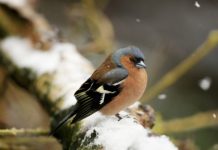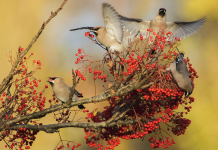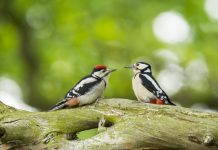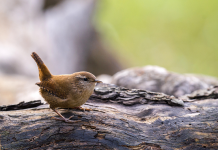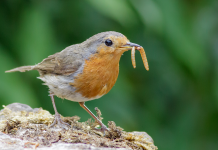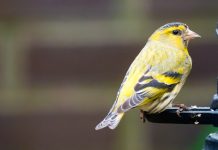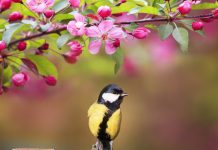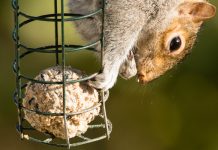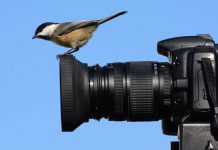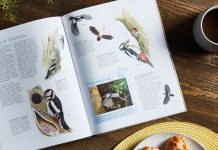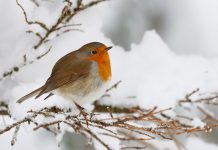Birds learn how to fly, never knowing where the flight will take them.
– Mark Nepo
For months now we’ve watched our garden birds put on an amazing show, waking us up with a beautiful dawn chorus or frantically flying back and forth to feed their young. Finally, we had the joy of seeing fluffy little fledglings taking their first look at the world. However, once August arrives our gardens can go a little quiet. But don’t worry – our feathered friends are just keeping a low profile as they go through their annual moult and exhausted parent birds take a little time to recover.
A bird bath is a great way to lure birds back into view at this time. Just like us, birds depend on water for their survival, so it’s especially important to keep your bird baths topped up in the summer months, when there may be little water available elsewhere. With ongoing drought making it hard to find food, especially for birds that feed on worms such as robins and blackbirds, it’s important to keep feeders and bird tables topped up too.
Delve into this month’s Your Happy Beaks Garden to discover birds to spot this month, what you should be doing in your garden in August, and how to enter our #SnappyBeaks competition. And don’t forget to take part in the national Big Butterfly Count, running until 4th August!
Garden Birds to Spot in August
Your gardens may have quietened down towards the end of the summer, but there will still be a hive of activity still going on from your very own back doorstep. Look out for these birds in the garden and when you’re out and about.
House Martin
Another long-distance traveller arriving in the UK from Africa during the summer months, the house martin can be distinguished from the swallow by the white patch on its rump and lack of red on the face. Though it’s rare to get a close enough look to see this, since martins spend most of their time on the wing, their legs and feet are covered in white feathers. See our guide to swifts, swallows and martins for more details on how to tell these summer migrants apart. Similar to swallows, house martins build mud cup nests under the eaves of buildings. Like swallows, house martins feed on insects whilst on the wing. However, house martins typically feed at a higher altitude than swallows, which avoids competition between the two species.
Though still numerous and widespread, house martins are in decline as warmer, drier weather leads to less wet mud being available from which to build their nests. If you wish, you can help house martins and swallows by leaving out a tray of wet mud in the garden from April to July. You can also buy artificial house martin nests to encourage them to encourage them to breed under your eaves. They are best placed in groups, particularly near existing nests.
Did you know?
- House martins are one of the most sociable birds, often forming nesting colonies of several hundred birds.
- Each nest is made up of at least 1,000 beak-sized mud pellets. It takes a pair of house martins about 10 days to build their nest, depending on the availability of mud nearby.
- House martins usually have two broods per season and young from the first brood have often been observed helping their parents feed the next brood, an unusual occurrence in birds.
Blackcap
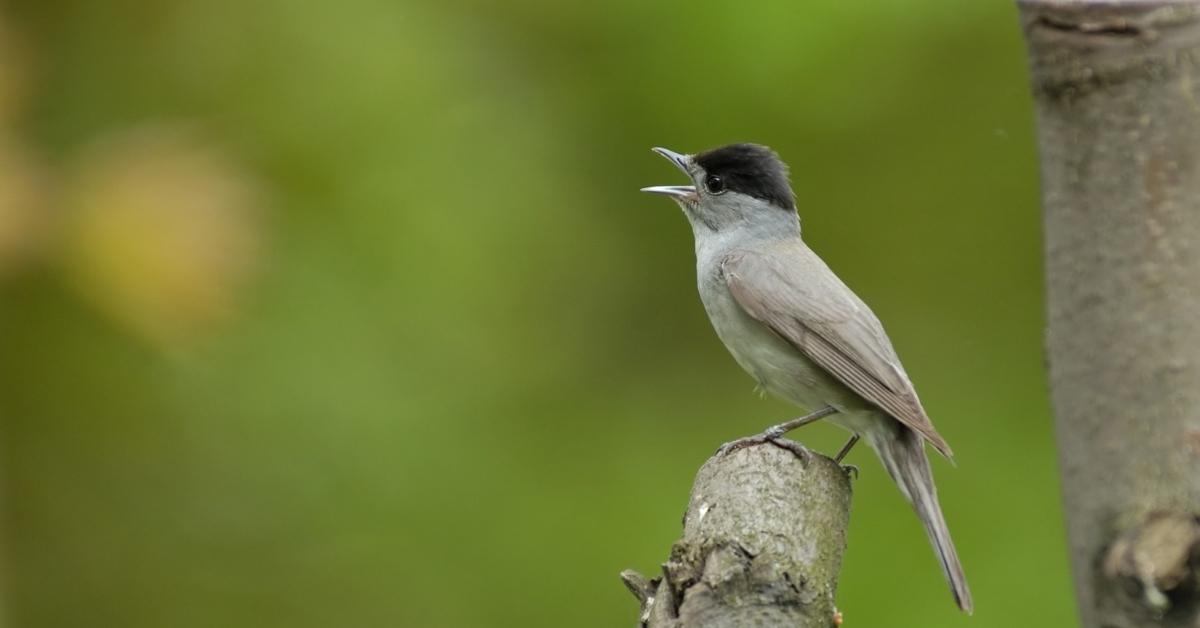 The blackcap is another summer visitor to the UK, overwintering in southern Europe or northern Africa and arriving in April and May before leaving again in early autumn. The male can often be heard proclaiming its beautiful, loud and fluting song from a high vantage point – giving the blackcap the nickname ‘northern nightingale’. The male is easily identified by its black ‘cap’. The female is rather more shy and has a chestnut brown cap. Though primarily woodland residents, blackcaps will venture into parks or gardens if there are lots of trees and shrubs available. They feed on insects and berries – to attract blackcaps to your garden, try placing an apple in the branches of a shrub or tree.
The blackcap is another summer visitor to the UK, overwintering in southern Europe or northern Africa and arriving in April and May before leaving again in early autumn. The male can often be heard proclaiming its beautiful, loud and fluting song from a high vantage point – giving the blackcap the nickname ‘northern nightingale’. The male is easily identified by its black ‘cap’. The female is rather more shy and has a chestnut brown cap. Though primarily woodland residents, blackcaps will venture into parks or gardens if there are lots of trees and shrubs available. They feed on insects and berries – to attract blackcaps to your garden, try placing an apple in the branches of a shrub or tree.
Did you know?
- With the provision of bird food in gardens, blackcaps are increasingly choosing to remain in the UK over winter. If you see a blackcap in the UK during winter, please report your sighting to Birdtrack, a project run by the BTO, RSPB and Birdwatch Ireland.
- Blackcaps are very partial to mistletoe berries. They are very effective at spreading mistletoe seeds, wiping them off on a branch where they may germinate after eating the flesh of the berry.
Green Woodpecker
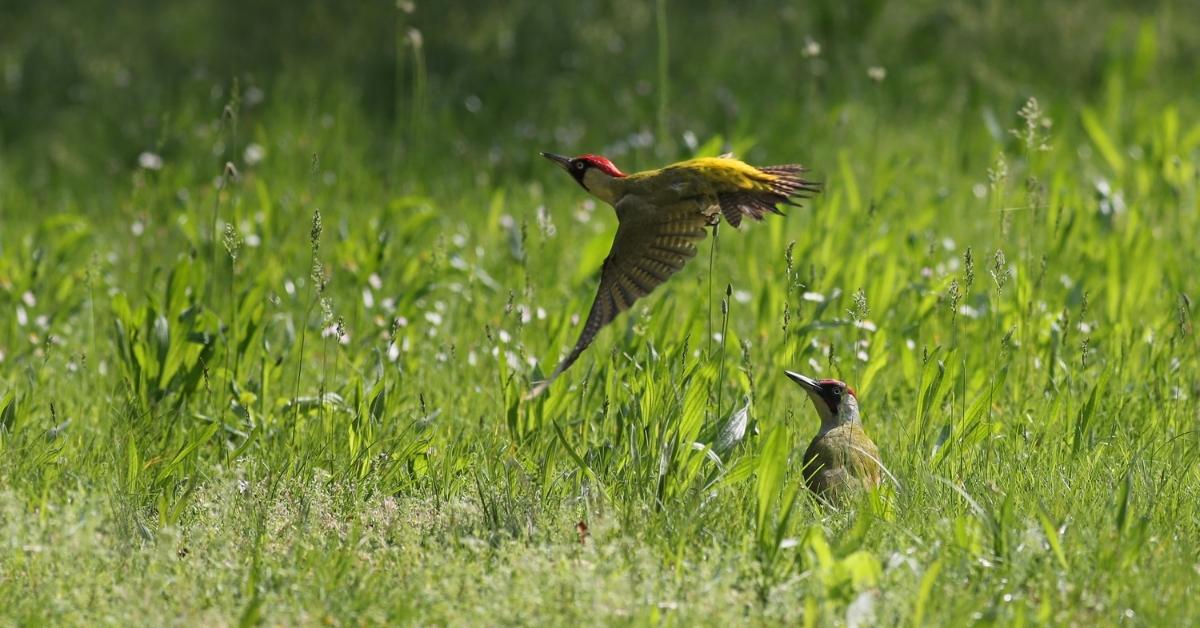 The largest of the three British native woodpeckers, the green woodpecker is easily distinguished by its primarily green plumage with bright yellow rump and patch of red on the top of its head. Their staple diet is ants and they are often seen feeding on lawns, where they use their strong beaks to excavate ant colonies from the ground. However, their beaks are not as strong as other woodpeckers, so they do not engage in the characteristic ‘drumming’ which other woodpeckers use to communicate, and only drill nest holes into soft wood.
The largest of the three British native woodpeckers, the green woodpecker is easily distinguished by its primarily green plumage with bright yellow rump and patch of red on the top of its head. Their staple diet is ants and they are often seen feeding on lawns, where they use their strong beaks to excavate ant colonies from the ground. However, their beaks are not as strong as other woodpeckers, so they do not engage in the characteristic ‘drumming’ which other woodpeckers use to communicate, and only drill nest holes into soft wood.
Did you know?
- Green woodpeckers have a loud, very recognisable call that sounds like raucous laughing and is called a ‘yaffle’.
- Green woodpeckers prefer solitude and spend most of the year outside the breeding season living alone.
Gardening in August
August isn’t just a busy time for our feathered friends – it’s a busy time for us in the garden, too, with many thirsty plants demanding constant attention! Here are some of the key jobs for the garden in August.
Veg Gardens
- Tomato plants: Pinch out any side shoots from your tomato plants. If you like, you can pot these up to create new tomato plants. Feed regularly with Tomorite or another high-potassium feed to encourage fruiting and ripening.
- Courgettes: Pick courgettes before they turn into marrows to encourage the plants to keep producing.
- Keep sowing successional crops such as salads for a continuous harvest.
Flowers & Bulbs
- Deadheading: Continuously deadhead bedding plants, roses and perennials to encourage further flowering, and remove any fallen petals to prevent fungal disease.
- Sweet peas: Keep picking your sweet peas to encourage more blooms to be produced, and remove any seedpods that may develop. Keep them well watered and fed regularly for best results.
- Take houseplants outside: Houseplants can benefit from a breath of fresh air in the summer months. Sit them outside for a few hours in a sheltered spot out of direct sun.
Wildlife Gardening
- Bird baths: A bird bath will be a very welcome addition to your garden, particularly as the weather warms up. Make sure to keep it clean and topped up regularly with clean water for them to safely drink and bathe in. For more information, see our handy guide to bird baths.
- Feeding garden birds: As well as filling your feeders, consider putting out some
- Mealworms for birds such as robins, blackbirds and thrushes. In periods of dry weather real worms retreat deep underground, making it hard for these birds to access their staple diet. You could even try soaking the mealworms for a tasty treat!
- Stay messy: You heard us correctly! Leave a quiet corner untidy to allow wildlife to move in – for example a patch of unmown grass, or a small patch of brambles or nettles, or a wood pile.
Read our blog for more hints and tips on how to care for garden birds this summer.
#SnappyBeaks
Thank you to everyone who has entered our #SnappyBeaks competition this month. We love seeing your entries! Each month we showcase some of your best birdy snaps, in the garden and in the wild, and give you a chance to win a prize in the process.
Get Snappy with Us!
It’s so simple to enter! Just share your photo with us on any of our social media platforms, using the hashtag #SnappyBeaks. You can enter via email, Instagram, Facebook, Messenger or Twitter. As long as your photo is related to bird feeding or wild birds in some way, we’ll consider it as a valid entry. Visit our Snap Of The Month page to find out more.
Has Your Garden Gone Quiet?
You may notice towards the end of summer that your garden starts to quieten down in both birdsong and activity. After a few months of seeing your feathered friends happily flitting about in your garden, this can seem like a bit of a surprise. But don’t worry, it’s all perfectly normal.
By August, most birds have finished their breeding season and their fledglings are now busy setting off on their own adventures. You would think this might be the ideal time for the parent birds to sit back, relax and have a well-earned sleep. But, that’s not the case.
In a good year, each set of parents will raise ten or more chicks to adulthood. Obviously, this is brilliant for a growing bird population, but they can’t all stay where they were born. So their parents will be encouraging them to find new territories and to set up homes in their own little corners of the world.
From learning about moulting to finding out how to get ahead for next year’s breeding season, read our end of summer wildlife guide to find out more.
Big Butterfly Count 2024
If you haven’t already, don’t forget to take part in the UK’s annual Big Butterfly Count by 4th August to give butterflies a helping hand! Just like the Big Garden Birdwatch, it’s great fun, and every set of results counts. This is a great way to learn more about the butterflies in your garden or that you spot whilst out and about whilst helping their conservation. It’s also a great activity to do with the kids! Taking part is easy: simply download your free ID guide, choose a spot to look for butterflies and watch for 15 minutes, note down what you see and record your sightings on the website. You can even browse the interactive map of results to see how your data contributes to the bigger picture of butterfly activity in the UK!
You’d be surprised at how many butterflies you spot once you get your eye in. You’re especially likely to see them around buddlejas and patches of brambles or nettles. On a sunny Friday evening, this is what I spotted in 15 minutes in a hedgerow and nettle bank alongside an arable field:
- Comma x 3
- Speckled wood x 2
- Gatekeeper x 1
- Peacock x 1
- Large white x 1
- Large skipper x 1
Don’t worry if you don’t know your butterflies – simply download Butterfly Conservation’s handy guide to the most common species and you’ll be well on your way!

